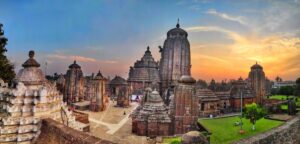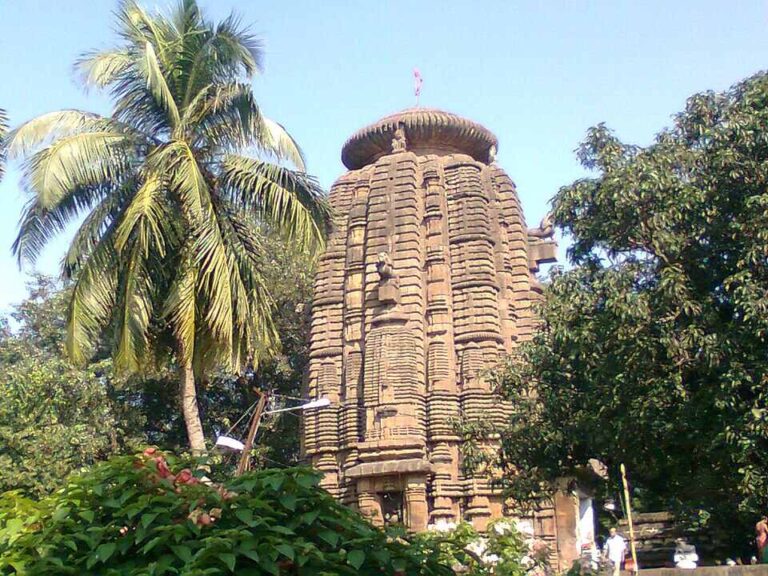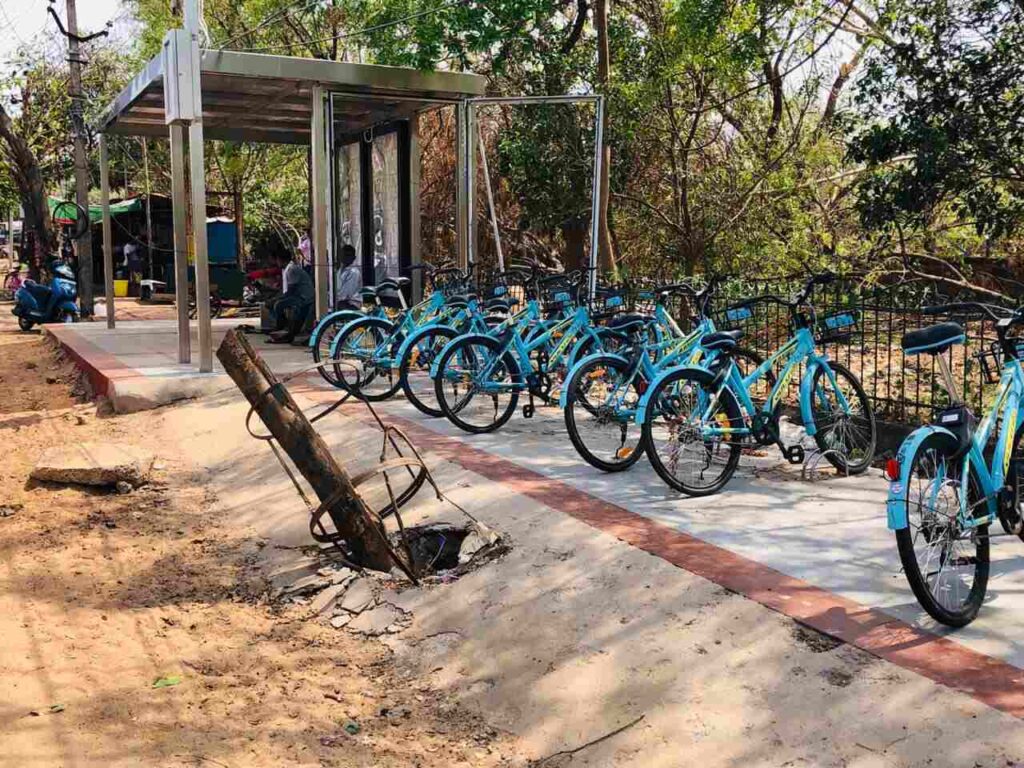The easternmost Indian state of Odisha is home to Bhubaneswar smart city which is both its capital and largest city. Due to its wide variety of historic temples and monuments that showcase the history and culture of the area, it is also known as the Temple City and now its one of the best smart city in India/Bharat.One of the oldest cities in India is Bhubaneswar, which was a part of the Kalinga kingdom in the seventh century BCE. Over the centuries, it has been the scene of numerous dynasties, invasions, wars, and transformations.
Today, it is a modern, growing city that has become a center for tourism, education, health care, and information technology. The Government of India decided Bhubaneswar as one of the first 20 cities to be developed under the Smart Cities Mission, a flagship initiative to promote urban transformation and sustainable development.
History of Bhubaneswar
 The name Bhubaneswar means “Lord of the World” in Sanskrit, and is derived from the name of Lord Shiva, who is worshipped as the presiding deity of the city Lord Lingaraj .The city is also known as Toshali,Ekamra Kshetra (Area adorned with a mango tree) and Chakra Kshetra (Area of the wheel), because of its association with legends and myths related to Shiva and Vishnu.
The name Bhubaneswar means “Lord of the World” in Sanskrit, and is derived from the name of Lord Shiva, who is worshipped as the presiding deity of the city Lord Lingaraj .The city is also known as Toshali,Ekamra Kshetra (Area adorned with a mango tree) and Chakra Kshetra (Area of the wheel), because of its association with legends and myths related to Shiva and Vishnu.
It is also said that Bhubaneswar was a part of the ancient Kalinga Kingdom, and the capital of the kingdom was initially named as “Tribhubaneswara” (Lord of Three Worlds) which might have transformed to the present name over the time.
 The earliest mention of Bhubaneswar is found in the rock edict of Emperor Ashoka at Dhauli Stupa, which is also known as Santi Stupa near the city, where he recorded his conquest of the Kalinga kingdom in the 3rd century BCE. The edict also marks his conversion to Buddhism and his propagation of peace and dharma (righteousness).
The earliest mention of Bhubaneswar is found in the rock edict of Emperor Ashoka at Dhauli Stupa, which is also known as Santi Stupa near the city, where he recorded his conquest of the Kalinga kingdom in the 3rd century BCE. The edict also marks his conversion to Buddhism and his propagation of peace and dharma (righteousness).
Dynasties
From the seventh century CE onward, the city flourished as a center of Hindu worship under a number of dynasties, including the Shailodbhavas, Bhaumakaras, Somavamsis, Gangas, Kesari, Kalachuri, Eastern Gangas, Suryavamsis, Gajapatis, Mughals, Marathas, and British. There have been hundreds of temples built in the city, mostly for Shiva and Vishnu but also for other gods. The temples are well known for their iconography, sculptural artistry, and architectural design.
Some of the famous temples are
Lingaraj Temple
Rajarani Temple
Mukteshwar Temple
Parasurameshwar Temple
Vaital Deul Temple
Brahmeswara Temple
Ananta Vasudeva Temple
Rameshwar Temple
Astasambhu Temple
Ram Mandir










The city also became a centre of Buddhist and Jain heritage, as evidenced by the rock-cut caves at Udayagiri and Khandagiri hills. These caves were built by King Kharavela and his successors in the 1st century BCE and later. The caves contain inscriptions, sculptures, and paintings depicting various aspects of religious and secular life. Some of the must visit caves are
Rani Gumpha (Queen’s Cave)
Hathi Gumpha (Elephant Cave)
Ganesh Gumpha (Ganesha Cave)
Ananta Gumpha (Snake Cave)
Bagh Gumpha (Tiger Cave).


The city declined in importance after the 15th century CE, when it was sacked by several invaders such as Kalapahad (a general of Bengal Sultanate), Mughals, Marathas, and British. The city lost many of its temples, monuments, and cultural treasures during this period. The city remained a provincial town until 1948, when it was chosen as the new capital of Odisha, replacing Cuttack city.
Transformation into a Smart City
Bhubaneswar was selected as one of the first 20 cities to be developed under the Smart Cities Mission in 2016. The proposal was prepared with extensive citizen engagement and feedback through various platforms such as online surveys, social media, workshops, and competitions.
The strategy is focused on taking a citizen-centered approach, and feedback from local people has pinpointed ‘smart growth’ as the main priority.
Bhubaneswar has identified seven smart city pillars which align the citizen’s aspirations and needs with city systems. These are:
Governance:
The Odisha government’s commitment to the development of Bhubaneswar as a smart city is crucial for the city’s growth and transformation. By providing funding, policy support, and coordination, the government is playing a vital role in shaping the future of the city and improving the quality of life for its residents.
City planing and Design
The Bhubaneswar city planning was given by a German archaeologist named Otto Konigsberger in 1946.
AfterGovt of India’s smart city initiative, it was made with the central Govt. and BDA.
The city planning includes Good quality communication for its citizens.
It includes good servilance for better study of the city.
It also include city bus facility (MO BUS) and cycle for people like (MO CYCLE).
Urban Utility:
Govt. Of odisha aims to improve the reliability, affordability, and sustainability of urban utilities by using smart solutions for water supply, Now govt. is planning for 24 x 7 water supply to its citizens.
Odisha Govt doing a fantastic job towards the cleanliness of the city waste management system and sanitation.
Now city get 24×7 energy supply, and ICT connectivity.
Urban Mobility:
Now every corner of city link with a smart city bus facility which is called MOBUS, at a very affordable price.
Click here to find the MOBUS city Map.
The government is planning to switch from diesel buses to total electric buses in the coming year.
City transforming its main bus terminal to high-class Bus terminal with all the facility which is located at Baramunda.
MOCYCLE is an initiative for those who prefer to ride bicycles.



Sustainable Urban Development:
All the vacant spaces in the city are converted to green spaces. Trees are planted at the empty spaces in the city.
A well-planned waste management system is initiated in smart city Bhubaneswar. They collect waste from every corner of the city.
The government has now installed all street lights with LED street lights and planning to install more and more rooftop solar panels to enhance the green energy sector.
It creates many vending zones for small shopkeepers.
The Bhubaneswar smart city has all the facilities for entertainment, Roof top Bar, cafe and many more.
Bhubaneswar is developing a pilot ‘smart district’ that implements smart city tools and solutions in a defined area. The district, voted for by the public, is 985 acres, brings together people, jobs, and services, and prioritizes walking, cycling, and public transport.
Under this project, it includes:
- Smart Janpat
- Smart Park
- Rain water harvesting system
- Uninterrupted power supply
- 24×7 water supply
- High class mecical facilities
- 24×7 ambulance service
- full city surveillance system
- safe transport system
- Affordable and quality Education system
In all Point of view Bhubaneswar is one of the leading examples of smart cities in India. It has adopted a citizen-centric approach to become a smart city that promotes “smart growth”. It has engaged its citizens in every stage of the smart city development process. It has implemented various projects that use technology and innovation to improve the quality of life of its citizens. It has also brought several benefits for the city and its citizens. Bhubaneswar smart city is the most developing city in the world.

